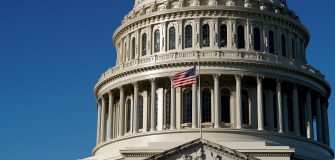Thirteen years of Obamacare increasing healthcare costs
Share
The Affordable Care Act turned 13 last week, and I was asked to provide testimony before the House Committee on Ways and Means
on how the law, as well as several recent expansions of it, failed to make healthcare more affordable. Here is a slightly modified version of what I told Congress.
The ACA has caused premiums to soar. Individual market premiums more than doubled in the first four years after its implementation, yet plans covered fewer doctors and hospitals. By 2021, the average ACA plan premium plus deductible for a family of four was about $25,000.
Since coverage is cost prohibitive, most enrollees need extremely large subsidies to afford these plans. Taxpayers pay for more than 80% of the premium on average and pick up almost all the cost of premium increases over time. This gives insurers significant pricing power and in turn leads to higher premiums — an inflationary spiral.
To understand the ACA’s effects on our healthcare system, it’s important to acknowledge some basic truths. First, the U.S. does not have a free market for healthcare. Half of U.S. healthcare spending comes from the government. Most of the rest is heavily impacted by government policy.
As government’s role in healthcare has expanded, prices have skyrocketed. Hospital prices have increased more than any other major economic sector, rising three times faster than inflation since 2000. By contrast, in sectors where government’s role is minimal, inflation-adjusted prices typically decline while quality improves.
Too often, however, high healthcare prices and spending do not correspond to high value and improved health. For example, the ACA expanded coverage and significantly increased spending primarily through Medicaid, but American life expectancy declined for three straight years after the ACA’s coverage provisions took effect. In fact, Americans’ life expectancy was lower in 2019, before the pandemic, than in 2013.
There is too much government bureaucracy in healthcare. Government rules, despite good intentions, often restrict options for coverage and care, stymie innovation, and prevent providers from being able to best meet their patients’ needs. Government also mismanages programs to an epic degree, such as $100 billion in improper Medicaid payments each year.
There also is too much insurance bureaucracy in healthcare. Insurance is important, but having insurance pay for routine and shoppable services leads to overconsumption and waste. People often secure better prices by not using insurance. One study estimated that cash prices are 40% cheaper than prices with insurance. For healthcare services where third-party payment is limited — such as cosmetic surgery and Lasik — real prices have declined while quality has improved.
Moving forward, lawmakers should keep two principles in mind. First, policy changes always have unintended consequences. We should evaluate the outcomes, not the intentions behind policies. For example, many ACA proponents said that it would reduce emergency room visits because patients would find a usual source of care. But the exact opposite happened: ER use surged, often for non-emergency care.
Second, when government subsidizes something, it becomes more expensive. Subsidies increase demand, raise prices, and increase total spending — and taxpayers end up having to bear the burden.
Both the American Rescue Plan Act and the Inflation Reduction Act expanded the ACA’s already substantial subsidies.
Most of the benefit went to people who already had coverage
. Families with incomes well above $250,000 now qualify for large subsidies. The expanded subsidies incentivize employers to drop workplace coverage, raising government’s overall deficits. And all the new spending on the expanded subsidies also increases inflation.
Congress should build on existing policies to expand coverage options and improve incentive. These policies include Association Health Plans that allow employers to have economies of scale in obtaining health insurance for their employees, making coverage more affordable. Likewise,
individual coverage health reimbursement arrangements that enable employers to offer coverage
by making tax preferred contributions so their workers can buy what works best for them would help introduce competition into the sector.
Price transparency rules that empower patients and employers
to know prices before purchasing services is another important reform, as is expanding access to health savings accounts that give people incentives to ensure value from their healthcare expenditures.
When it comes to healthcare, Congress should trust people. Instead of giving the government more power to build on existing bureaucracies, Congress should let Americans have the freedom to spend their own money on the healthcare and coverage they choose.
Continue Reading at The Washington Examiner.













